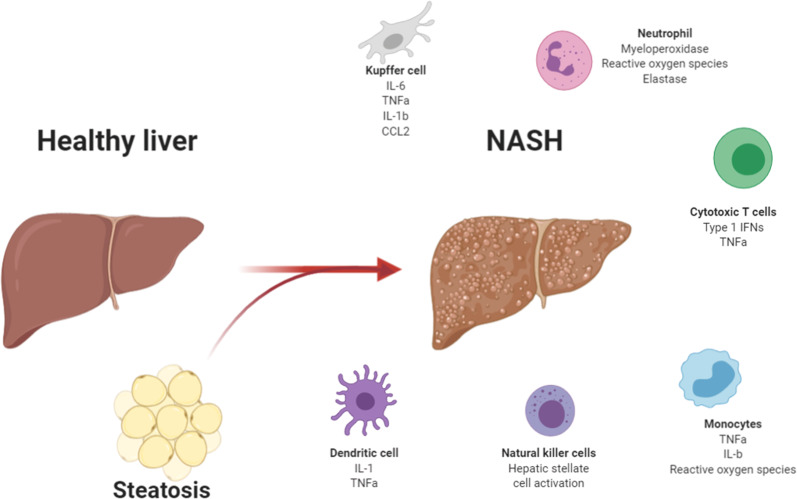Fig. 3.
Pathogenic immune mechanisms in NASH. NASH involves immune cell populations that functionally interact with each other. Increased fatty acid levels and lipotoxicity directly activate inflammation and result in hepatocyte injury and the release of DAMPs, triggering an amplified inflammatory response. Kupffer cell activation stimulates the subsequent release of several proinflammatory cytokines that activate monocytes and neutrophils. These cells exacerbate liver injury by secreting reactive oxygen species and profibrotic signals that promote fibrosis. Cytotoxic T cell activation contributes to perpetuating inflammation by the production of large amounts of IFNγ and TNFα, and natural killer cell activation directly stimulates hepatic stellate cells and hepatocytes, causing further inflammation and inducing profibrotic signals

